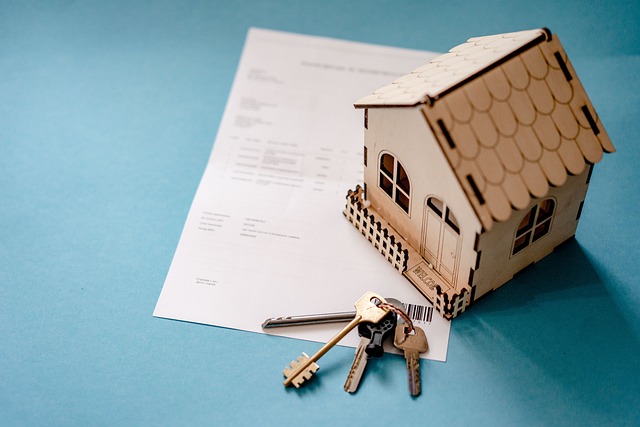Rent to Own Homes: A Comprehensive Guide to Alternative Homeownership
Rent to own homes, also known as lease-to-own or lease-option agreements, offer a unique path to homeownership for those who may not qualify for traditional mortgages. This alternative arrangement allows potential buyers to rent a property with the option to purchase it at a later date. As the real estate market continues to evolve, rent to own homes have gained popularity among both buyers and sellers, providing flexibility and opportunities in the housing market.

During the lease period, the tenant has the opportunity to improve their financial situation, save for a down payment, or work on repairing their credit score. This can make it easier to secure a mortgage when the time comes to exercise the purchase option. It’s important to note that the tenant is not obligated to buy the home at the end of the lease period, but they may forfeit any rent credits if they choose not to purchase.
What are the benefits of rent to own homes for buyers?
Rent to own homes offer several advantages for potential buyers. First, it provides a pathway to homeownership for those who may not currently qualify for a traditional mortgage due to credit issues or lack of down payment. The lease period allows time to address these financial challenges while already living in the desired home.
Additionally, rent to own agreements can lock in the purchase price of the home at the beginning of the lease term. This can be beneficial in markets where home prices are rising rapidly, as the buyer may end up purchasing the property for less than its market value at the end of the lease period.
Lastly, the rent to own option allows buyers to “test drive” the home and neighborhood before committing to a purchase. This can provide peace of mind and reduce the risk of buyer’s remorse that sometimes occurs with traditional home purchases.
What should sellers consider when offering a rent to own option?
For property owners, offering a rent to own option can be an attractive way to sell a home, especially in slow markets. It can help attract a wider pool of potential buyers and provide a steady income stream through rent payments while working towards a sale.
However, sellers should carefully consider the terms of the agreement. They need to ensure that the option fee and rent premium are sufficient to compensate for taking the property off the market for an extended period. Additionally, sellers should be prepared for the possibility that the tenant may not exercise the purchase option, which could result in a longer selling process.
It’s crucial for sellers to work with a real estate attorney to draft a comprehensive agreement that protects their interests and clearly outlines all terms and conditions of the rent to own arrangement.
What are the potential risks of rent to own homes?
While rent to own homes can offer benefits, there are also risks to consider. For buyers, one of the main risks is the possibility of losing money if they decide not to purchase the home or are unable to secure financing at the end of the lease period. Any option fees or rent premiums paid may be forfeited if the purchase is not completed.
Another risk is that the property value may decrease during the lease period, potentially leaving the buyer obligated to purchase the home at a price higher than its current market value. It’s essential for buyers to thoroughly research the local real estate market and have a professional home inspection before entering into a rent to own agreement.
For sellers, the primary risk is that the tenant may not follow through with the purchase, resulting in lost time and potential opportunity costs. There’s also the risk of property damage or neglect during the lease period, which could affect the home’s value.
How to find legitimate rent to own home opportunities?
Finding legitimate rent to own home opportunities requires diligence and careful research. Start by working with a reputable real estate agent who has experience with rent to own transactions. They can help identify potential properties and guide you through the process.
Online real estate platforms and local classifieds may also list rent to own properties. However, it’s crucial to verify the legitimacy of any listings and thoroughly vet the property owner before entering into an agreement.
Consider reaching out to local real estate investor groups or attending real estate networking events. These can be good sources of information and potential opportunities in the rent to own market.
What legal considerations should be addressed in a rent to own agreement?
A well-drafted rent to own agreement is essential to protect both the buyer and seller. Key elements that should be addressed include:
-
The purchase price of the property or a method for determining it
-
The length of the lease term and option period
-
The amount of rent and how much is credited towards the purchase
-
The option fee amount and whether it’s refundable
-
Responsibility for property taxes, insurance, and maintenance during the lease period
-
Conditions under which the option can be exercised or terminated
-
Consequences if either party fails to meet their obligations
It’s highly recommended that both parties seek independent legal counsel to review the agreement before signing. This ensures that all terms are fair, legally binding, and in the best interest of each party.
In conclusion, rent to own homes offer a unique alternative to traditional home buying and selling processes. While they can provide advantages for both buyers and sellers, it’s crucial to approach these agreements with caution and thorough understanding. By carefully considering the benefits, risks, and legal aspects of rent to own arrangements, individuals can make informed decisions about whether this path to homeownership is right for their specific circumstances.






